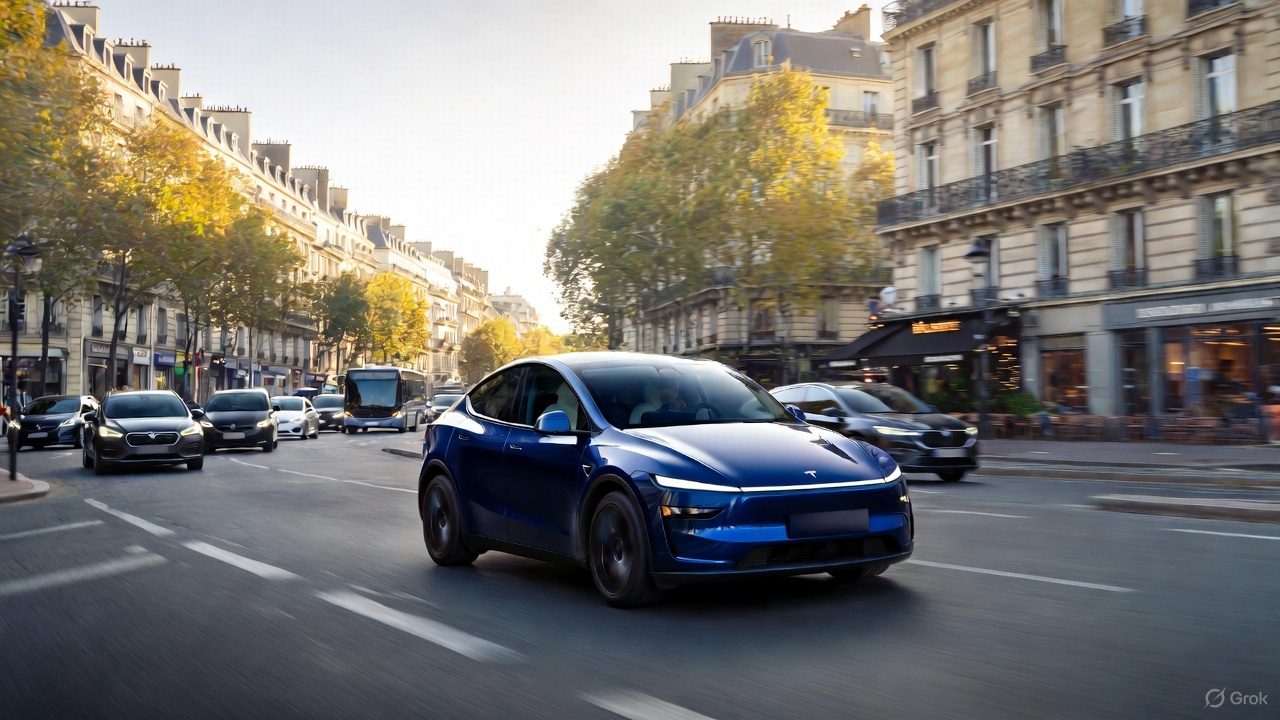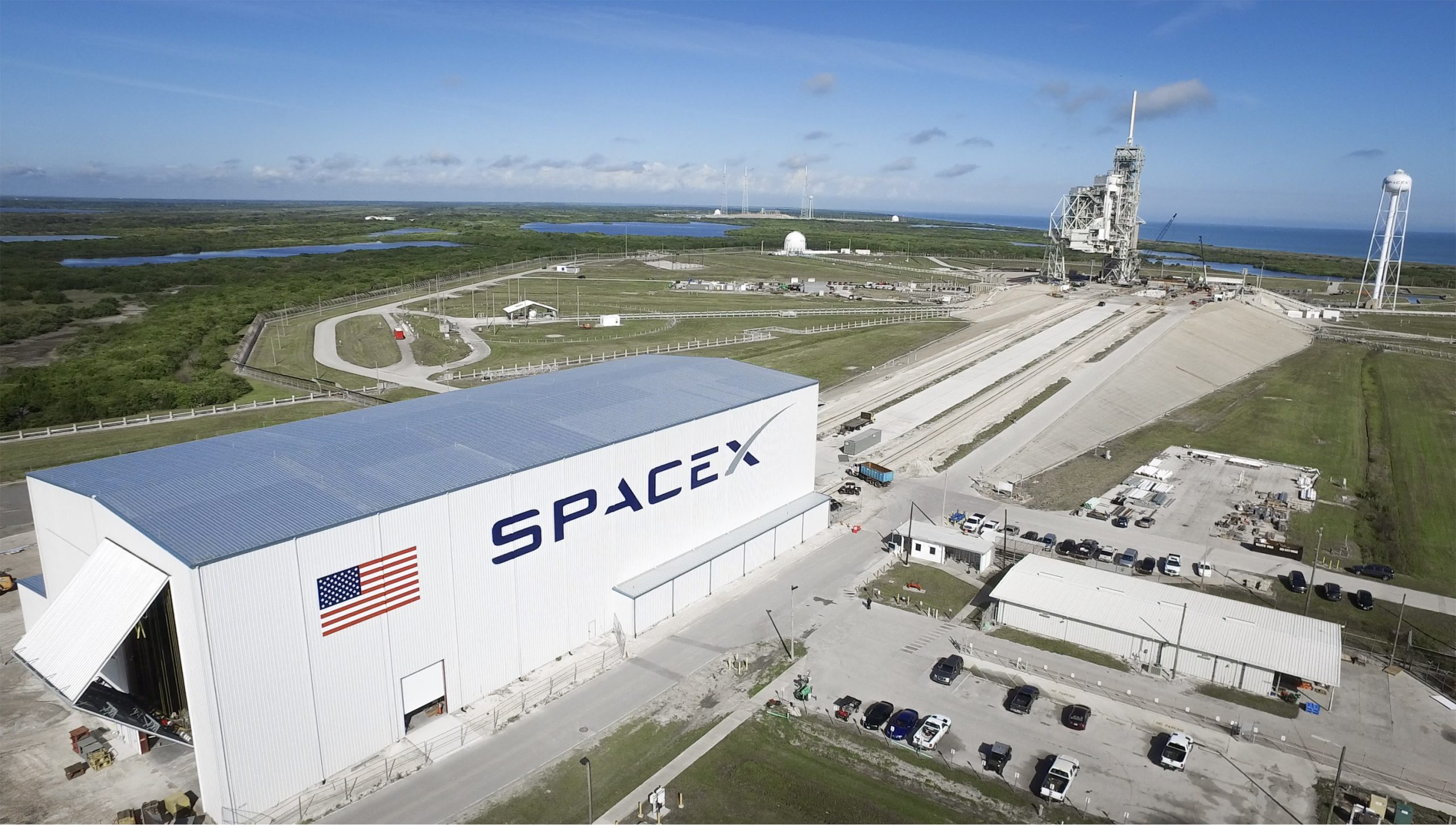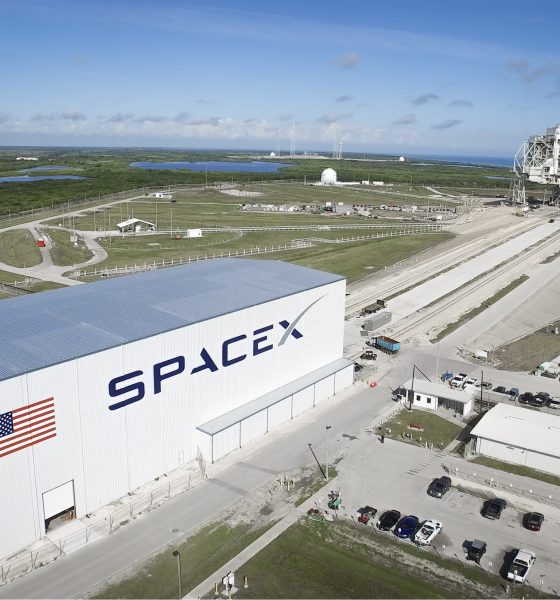Kennedy Space Center and Cape Canaveral Air Force Station were largely spared the brunt of Hurricane Irma due to last-second changes to its projected path. Both SpaceX and ULA have since reported that damages to their facilities are minimal and unlikely to contribute to any delays in upcoming launches, of which SpaceX has several.
Several days before Hurricane Irma reached Florida, the storm projected to make landfall almost directly on Cape Canaveral, stoking fears of spaceflight journalists and forcing the evacuation of several living on the Space Coast. While Irma’s course veered southeast as it neared the Space Coast, Cape Canaveral eventually experienced some level of heavy rain, flooding, and high winds on Sunday and Monday. A NASA flyover of Kennedy Space Center illustrated this best, with very little damage visible from the helicopter, aside from some limited flooding and some mild damage to the roofs of several buildings.
Modern facilities at the Cape are generally built to tolerate Category 5 winds of 150 mph, and Irma appeared to potentially pose a threat to even those structures in the early days of forecasts. However, with maximum recorded winds of around 100 mph from Irma, worries more centered around tornadoes formed by the hurricane, as well as more temporary structures that were under construction. Gwynne Shotwell commented on this earlier today, speaking at the World Satellite Business Week meeting in Paris, France. SpaceX’s President said that LC-39A and SLC-40 looked fine in initial flyovers performed by the company. Her main concern was an array of construction materials and temporary shelters currently at SLC-40 that were exceptionally vulnerable to hurricane conditions.

SpaceX’s LC-39A launch pad seen from a NASA helicopter on 9/12. Thankfully, no damage is readily apparent. (NASA)
Following natural (and unnatural) disasters at Kennedy Space Center and CCAFS, access is restricted to a select crew of emergency reaction teams that are tasked with combing through the myriad facilities and cataloging any serious damage and potential dangers for workers. Once they are finished with their surveys, nonessential personnel are allowed to return to their workplaces and begin their own surveys and repairs. CCAFS and the 45th Space Wing began allowing nonessential personnel back into the facility on Tuesday, while Kennedy Space Center may open its gates on Thursday. Once allowed back in, SpaceX can begin their own damage survey and conduct any necessary repairs.
The company is planning to conduct its next East Coast launch as early as October 2nd, with a second October launch from Florida expected no earlier than October 14th. SpaceX is also scheduled to launch Iridium’s third group of ten NEXT satellites from California on October 4th, so the company has an extremely busy month ahead. Thankfully, with more than two weeks between now and next launch, SpaceX will likely have plenty of time to undertake all necessary repairs, so long as damage is minimal.
7th and 8th sats for Launch #3 just pulled out to head towards VAFB. I feel better knowing there's a guard riding along to protect them! pic.twitter.com/6NppidPhDh
— Matt Desch (@IridiumBoss) September 4, 2017
While SpaceX was spared, those more directly in the path of Irma were not nearly as lucky. In Florida, nearly 25% of all residents were without power for days, and many millions are still waiting for utility companies to repair widespread damage to their infrastructure. Many homes have undoubtedly been destroyed beyond repair. Floridans were largely spared from the deadly threat of Irma by widespread evacuation orders on the East coast, but most residents of islands along Irma’s path had nowhere to evacuate. Dozens of deaths have been reported in Barbados, the Virgin Islands, and other islands. Many more were killed and injured in Cuba. Recovery from Irma will undoubtedly take many years.

News
Man credits Grok AI with saving his life after ER missed near-ruptured appendix
The AI flagged some of the man’s symptoms and urged him to return to the ER immediately and demand a CT scan.

A 49-year-old man has stated that xAI’s Grok ended up saving his life when the large language model identified a near-ruptured appendix that his first ER visit dismissed as acid reflux.
After being sent home from the ER, the man asked Grok to analyze his symptoms. The AI flagged some of the man’s symptoms and urged him to return immediately and demand a CT scan. The scan confirmed that something far worse than acid reflux was indeed going on.
Grok spotted what a doctor missed
In a post on Reddit, u/Tykjen noted that for 24 hours straight, he had a constant “razor-blade-level” abdominal pain that forced him into a fetal position. He had no fever or visible signs. He went to the ER, where a doctor pressed his soft belly, prescribed acid blockers, and sent him home.
The acid blockers didn’t work, and the man’s pain remained intense. He then decided to open a year-long chat he had with Grok and listed every detail that he was experiencing. The AI responded quickly. “Grok immediately flagged perforated ulcer or atypical appendicitis, told me the exact red-flag pattern I was describing, and basically said “go back right now and ask for a CT,” the man wrote in his post.
He copied Grok’s reasoning, returned to the ER, and insisted on the scan. The CT scan ultimately showed an inflamed appendix on the verge of rupture. Six hours later, the appendix was out. The man said the pain has completely vanished, and he woke up laughing under anesthesia. He was discharged the next day.
How a late-night conversation with Grok got me to demand the CT scan that saved my life from a ruptured appendix (December 2025)
byu/Tykjen ingrok
AI doctors could very well be welcomed
In the replies to his Reddit post, u/Tykjen further explained that he specifically avoided telling doctors that Grok, an AI, suggested he get a CT scan. “I did not tell them on the second visit that Grok recommended the CT scan. I had to lie. I told them my sister who’s a nurse told me to ask for the scan,” the man wrote.
One commenter noted that the use of AI in medicine will likely be welcomed, stating that “If AI could take doctors’ jobs one day, I will be happy. Doctors just don’t care anymore. It’s all a paycheck.” The Redditor replied with, “Sadly yes. That is what it felt like after the first visit. And the following night could have been my last.”
Elon Musk has been very optimistic about the potential of robots like Tesla Optimus in the medical field. Provided that they are able to achieve human-level articulation in their hands, and Tesla is able to bring down their cost through mass manufacturing, the era of AI-powered medical care could very well be closer than expected.
News
Tesla expands Model 3 lineup in Europe with most affordable variant yet
The Model 3 Standard still delivers more than 300 miles of range, potentially making it an attractive option for budget-conscious buyers.

Tesla has introduced a lower-priced Model 3 variant in Europe, expanding the lineup just two months after the vehicle’s U.S. debut. The Model 3 Standard still delivers more than 300 miles (480 km) of range, potentially making it an attractive option for budget-conscious buyers.
Tesla’s pricing strategy
The Model 3 Standard arrives as Tesla contends with declining registrations in several countries across Europe, where sales have not fully offset shifting consumer preferences. Many buyers have turned to options such as Volkswagen’s ID.3 and BYD’s Atto 3, both of which have benefited from aggressive pricing.
By removing select premium finishes and features, Tesla positioned the new Model 3 Standard as an “ultra-low cost of ownership” option of its all-electric sedan. Pricing comes in at €37,970 in Germany, NOK 330,056 in Norway, and SEK 449,990 in Sweden, depending on market. This places the Model 3 Standard well below the “premium” Model 3 trim, which starts at €45,970 in Germany.
Deliveries for the Standard model are expected to begin in the first quarter of 2026, giving Tesla an entry-level foothold in a segment that’s increasingly defined by sub-€40,000 offerings.
Tesla’s affordable vehicle push
The low-cost Model 3 follows October’s launch of a similarly positioned Model Y variant, signaling a broader shift in Tesla’s product strategy. While CEO Elon Musk has moved the company toward AI-driven initiatives such as robotaxis and humanoid robots, lower-priced vehicles remain necessary to support the company’s revenue in the near term.
Reports have indicated that Tesla previously abandoned plans for an all-new $25,000 EV, with the company opting to create cheaper versions of existing platforms instead. Analysts have flagged possible cannibalization of higher-margin models, but the move aims to counter an influx of aggressively priced entrants from China and Europe, many of which sell below $30,000. With the new Model 3 Standard, Tesla is reinforcing its volume strategy in Europe’s increasingly competitive EV landscape.
News
Tesla FSD (Supervised) stuns Germany’s biggest car magazine
FSD Supervised recognized construction zones, braked early for pedestrians, and yielded politely on narrow streets.

Tesla’s upcoming FSD Supervised system, set for a European debut pending regulatory approval, is showing notably refined behavior in real-world testing, including construction zones, pedestrian detection, and lane changes, as per a recent demonstration ride in Berlin.
While the system still required driver oversight, its smooth braking, steering, and decision-making illustrated how far Tesla’s driver-assistance technology has advanced ahead of a potential 2026 rollout.
FSD’s maturity in dense city driving
During the Berlin test ride with Auto Bild, Germany’s largest automotive publication, a Tesla Model 3 running FSD handled complex traffic with minimal intervention, autonomously managing braking, acceleration, steering, and overtaking up to 140 km/h. It recognized construction zones, braked early for pedestrians, and yielded politely on narrow streets.
Only one manual override was required when the system misread a converted one-way route, an example, Tesla stated, of the continuous learning baked into its vision-based architecture.
Robin Hornig of Auto Bild summed up his experience with FSD Supervised with a glowing review of the system. As per the reporter, FSD Supervised already exceeds humans with its all-around vision. “Tesla FSD Supervised sees more than I do. It doesn’t get distracted and never gets tired. I like to think I’m a good driver, but I can’t match this system’s all-around vision. It’s at its best when both work together: my experience and the Tesla’s constant attention,” the journalist wrote.
Tesla FSD in Europe
FSD Supervised is still a driver-assistance system rather than autonomous driving. Still, Auto Bild noted that Tesla’s 360-degree camera suite, constant monitoring, and high computing power mark a sizable leap from earlier iterations. Already active in the U.S., China, and several other regions, the system is currently navigating Europe’s approval pipeline. Tesla has applied for an exemption in the Netherlands, aiming to launch the feature through a free software update as early as February 2026.
What Tesla demonstrated in Berlin mirrors capabilities already common in China and the U.S., where rival automakers have rolled out hands-free or city-navigation systems. Europe, however, remains behind due to a stricter certification environment, though Tesla is currently hard at work pushing for FSD Supervised’s approval in several countries in the region.










